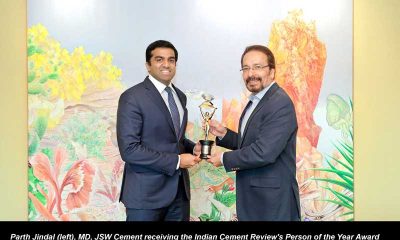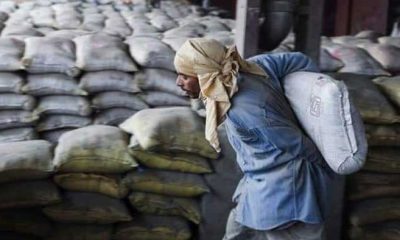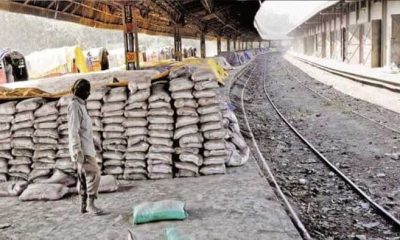Technology
Clinker grinding technology in cement manufacturing
Published
5 years agoon
By
admin
Clinker grinding technology is the most energy-intensive process in cement manufacturing. Traditionally, it was treated as "low on technology" and "high on energy" as grinding circuits use more than 60 per cent of total energy consumed and account for most of the manufacturing cost.
Since the increasing energy cost started burning the benefits significantly, the grinding technology came under radar of innovation and technology transformation. Focus shifted to being energy efficient and cost reduction. Population of traditional stand-alone two chamber and three chamber ball mills started slowing down getting replaced by vertical roller mills, high pressure grinding rolls (HPGR), pre-grinders, HoroMills along with high-efficiency dynamic separators, static separator (V-sep) with various innovative process combinations. Technology providers used this opportunity to create a business edge. As a result, substantial reduction in energy consumption levels was achieved successful.
Transformation in product portfolio emerged as blessing in disguise to the energy scenario. Change of traditional OPC into PPC, PSC and composite cement was a game changer. PPC captured widespread market giving breather to grinding energy situation as composition bears 35 per cent of fly ash whose grindability is much lower than clinker. This became profitable proposition not only for volume increase but also for reduced energy. Similarly, PSC proved profitable for the plants having resource logistic advantage. PSC manufacturing technology, varied from inter grinding to separate grinding, gave cost advantage due to clinker factor utilisation. The production of composite cements has been increasing for reasons concerned with process economics, energy reduction, ecology (mostly reduction of CO2 emission), conservation of resources and product quality/diversity. The most important properties of cement, such as strength and workability, are affected by its specific surface and by the fineness and width of the particle-size distribution. These can be modified to some extent by the equipment used in the grinding circuit, including its configuration and control.
Ball mill grinding
Evolution of ball mills was the starting point in communition theory adopted widely in cement manufacturing. Size reduction process of bulk solids acquires major part of cement process. This started from wet grinding in three chambers mills to latest mono chamber semi finished ball mills.
Most used systems are two chamber ball mills in finished mode. Grinding in these mills occur due to the effect of cataracting and cascading motion of grinding balls. Crucial factors that influence the grinding efficiency are:
- Liner design
- Circumferential velocity of the mill
- Shape, size and weight of the grinding media
- Friction between the lining and the grinding media
- Friction within the mill charge itself
Technology innovation made use of above factors; however results obtained were successful to the limited extent. Liners design advanced from Lorian liners to step liners to double wave to supplier customised patterns having less weight. Similarly classifiers changed from traditional deep wave, conveying pattern to thin design and bolt less, low weight liners. Wear rate of liners and grinding media is the most cost affecting factor. Improvements in wear rates and cost savings seen from Mn-steel to Hichrome to controlled metallurgy.
Higher the percentage chrome, better the wear resistance, however lowers the hardness normally. Hence, in order to make this system cost competitive and efficient, above factors must be used and leveraged for system selection and optimisation.
Vertical roller mill technology
Vertical Roller Mill (VRM) has been the most preferred technology over ball mill grinding in terms of various efficiency factors. VRM functions four main processes of grinding technology which are: drinding, drying, separation and transportation. Grinding efficiency is the energy utilised to create specific surface of material having same chemical/mineralogical composition. This can be expressed as: Eu = (Specific surface created/specific energy used). Energy utilisation in VRM grinding is better than ball mill technology. Theo power cons of VRM = (Sp. grinding press x roller area x No. of rollers x grinding track speed x friction factor). Friction factor differs from mill to mill and material to material.
Advancements in mill capacities and technology changing fast making VRM is most versatile and efficient. For the volume sensitive market, VRM started offering higher capacities, meeting expanding market requirements with single mill. At the same time, maintenance flexibilities proved this technology the most preferred choice. Various mill OEMs have their unique design features, offering advancements in technical features.
HPGR technology
High-pressure grinding rolls (HPGRs), with key process equipment as roller press in cement industry, have struggled and conquered for acceptance as finished mode operation in raw grinding and even as pregrinder in clinker grinding technology. Many of the issues that didn’t favour their widespread use have now been gradually gaining grounds. But still, it will remain subdued in selection arguments with VRM technology. Answer for this is again follows the similar requirement of customers, high capacity systems, low cost, high reliability, ease of operation and better wear resistance factors.
Most prevailing issue in the HPGR system is "high pressure" as the name suggests. High pressure has direct benefit on grinding efficiency however, it also has got immense impact on with standablity of grinding components, metallurgy of grinding profiles, mechanical stresses on drive components, etc.
In contemplating an answer to issue of the HPGR, the status of other accepted technologies like VRM must be examined. As an example, the latest and advanced VRM technology can be considered. When a plant operation / design is being considered, every well-equipped engineer will be able to turn to numerous rules of thumb associated with these factors:
Particle size distribution will be consistent in feed
Centralised and circumferentially distributed feed is required to extract the best performance.
Profile and condition of the HPGR is critical to deliver the best performance These issues prevail in VRM also. However VRM technology is well established to handle the variety of feed PSDs. A comparison between RP and VRM on some of the merits and demerits are as given:
Roller Press Parameters
Roller Press roller diameters typically vary from 0.5 m to 2.8 m, depending on the supplies, and roll widths vary from 0.2 m to 1.8 m. The aspect ratio of the rolls also varies as a function of manufacturer. Typical HPGR throughput rates range from 20 to 3,000 tph at different applications, with installed motor power as high as 3,000 kW per roll. The roller profile is the key deciding parameter on withstanding the high pressure and giving much needed life. This has been one of the significant characteristics of rollers / Roller Presses. but solutions are now in place for adequate life of the profiles. When operating an HPGR, the two most important operating parameters are:
Operating pressure
Roll speed
The two key operating parameters are inherently linked to the following:
RP throughput
Specific pressing force
Maximum pressure between the rolls
Specific energy input
RP Throughput: The throughput can also be calculated from the continuity equation as follows:
M = L x s x u x ?c x 3.6 (EQ 2) where
s = operating gap (mm)
?c = density of the product cake (t/m3)
Specific Pressing Force
The specific pressing force is defined as the grinding force applied to the rolls (kN), divided by the diameter (m) and width (m) of the rolls. The specific pressing force has the unit of N/mm2.Fsp = F/(1,000 x D x L) where,
Fsp = specific pressing force (N/mm2)
F = applied grinding force (kN)
D = roll diameter (m)
L = roll width (m)
Maximum achievable roller force must be at least
5500 kN/m2 for raw material
6000 kN/m2 for clinker and slag
Roller press design & operation
Similar to the VRM, there are few Roller Press Technology providers with different designs and principles. Mainly, they are: KHD, Koppern, Polysius. KHD has considerable roller press population for various applications. Their standard configurations are as below:
Stud lining roller is typical and popular solution for high life usage that KHD offers for. There are many advanced versions above this.
Similarly, Koppern roller press has got latest design features catering to the clinker grinding application. The roller profile is different than the other technology and offers high life hours of operation. Standard design feature and parameters that Koppern offers is as below:
POLYCOM is the established technology in roller press supplied by Thyssenkrupp Industries. Population spread across various application for clinker grinding, raw grinding and also in combi mode and finish mode.
Conclusion
Technology evolution has given user various options and alternatives. These options help user to focus on priorities. Volume is the main criteria. Mill capacities, especially in cement grinding are changing the scenario. There were no high capacity mills in the past for clinker grinding. Advanced VRM technology started offering higher capacity levels so that capex decisions became easy for the user.
At the same time, business expansion became visible in terms of stand-alone grinding station with high capacity mills. This is playing a major role in capturing various market demands and hence cement industry growth.
Design features of Gebr Pfeiffer
Design
- Roller and grinding bed inclined, concave grinding path
- Rollers suspended at a pressure frame
- Hydraulic actuated at a pressure frame
- Pull rods inclined to absorb torque, mill housing not affected with horizontal forces
- Swing lift device for retraction & servicing of roller
- High-efficiency separator type SLS
Operation
- Start-up with auxiliary drive, rollers statically on grinding table
- Normally large size mill casing and low pressure losses of gas flow
Design features of Loesche
Design
- Airlock in general for feeding
- High-efficiency separator, LDC
- Conical rollers 2, 3 according to mill capacity with S roller concept
- Rocker arm with hydraulic cylinders to exert the roller pressure
- Hydraulic cylinders with nitrogen accumulators
- Modular design; hydro pneumatic units can be combined with various mill sizes according to throughput or drying needs
Operation
- Rollers can be lifted from grinding track for low torque start-up of the mill
- Grinding pressure and counter pressures can be adjusted to maintain smooth operation
Design features of OK
Design
- Hydro pneumatic system for pressure exertion
- Multiple rollers, based on capacity
- Unique grooved roller profile
- Curved table profile
- Roller repositioning after wear
Operation
- Rollers will be lifter position during start up
- 2,4 rollers can be unloaded for partial capacity operation of special operating conditions
- Recirculation of hot exit gas to the Mill inlet
Design features of Ploysius Quadropol
Design
- 4 individual grinding rollers
- Cambered geometry of roller with better wear resistance
- Rollers can be swung out for maintenance
- Bearing assembly located outside the grinding chamber
- Ring craneway for maintenance works
Operation
Rollers can be unloaded for partial capacity operation of special operating conditions
Nozzle velocities can be adjusted during partial operations
High efficiency SEPOL separator
RP
Few applications in cement
grinding as semi finished mode
– Limited size?not beyond ~120 bar
+ Superior wear solutions
+ lower SEEC for dry and hard
material (Lower than VRM if in finished mode)
+ Market acceptance & early strength of cement
-Sensitive to feed variations
-More equipments & lay out space
VRM:
+ Proven solution, many applications
+ Large single units available
-Reliability of planetary reducer
+ Lower SEEC in compare with ball mill
+ Stable operation easy to achieve…
-… but often requiring water injection
-Support roller technology not successful
Feed chute placed above fixed roller, shut off gate and vertical flow control gate
Feature:
- Easy operation Only few moving parts
- Ensures stable operation even for high product fineness
- Easy start up procedure in
- combination with ROLCOX
- Roller profile is called Hexadur. It offers increased life of profile in compare with solid weld rollers.
About the authors:
Shreekant Hulgi Managing Partner, SPV Engineers
Vijaykumar Vemuri Managing Partner, SPV Engineers
Founded in October 2018, SPV Engineers is a partnership firm specialising in process safety (risk) assessments and solutions, plant performance improvement for productivity through "Mill & Kiln Modules", energy cost reduction through electrical and thermal energy optimisation, refractory design, selection and installation services, capex projects through process engineering, plant capacity debottlenecking and feasibility studies, fuel cost reduction through AFR projects and optimisation. SPV Engineers is a sales partner for latest and advanced SpectraFlow online analyser for minute-by-minute analysis and control. SpectraFlow is an analyser with no radiation risk and no statutory safety requirements. SpectraFlow works on unique principle of NIR (Near Infra Red) technology, which is first in the industry with minimum OPEX and cost of ownership.
You may like
Economy & Market
We are shaping the future of clean air
Published
4 days agoon
April 16, 2024By
admin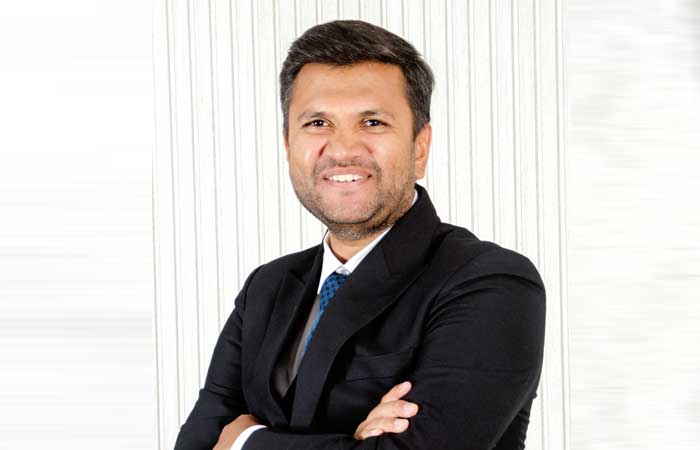
Monil Parikh, Managing Director, Techflow Enterprises Pvt Ltd, leads us to a better understanding of how cutting-edge designs and advanced technologies are revolutionising the process of filtration, driving efficiency and environmental responsibility within the cement sector.
Tell us about your air pollution control systems.
Techflow Enterprises, operating from our expansive 30,000 sq m facility, which is one of India’s largest, manufactures a comprehensive suite of air pollution control systems specifically designed for cement plants. Our solutions include:
Pulse Jet Bag Filters: Employing compressed air for efficient cleaning, these capture fine dust particles generated during grinding and packing. Techflow’s bag filters are designed to restrict the outlet emission up to 5mg/Nm3.
Electrostatic Precipitators (ESPs): Ideal for ultra-fine particulate matter in kiln exhaust gases, ESPs utilise an electric field for superior dust capture with 99.9 per cent capacity.
Centrifugal Fans: We offer various fans like induced draft (ID) fans for draft creation, process fans for dust-laden air transport, and kiln fans for high-temperature gas streams.
Techflow’s commitment to quality is evident in our proven track record. We are actively supplying solutions to leading cement players like Adani Cements, Ambuja and ACC Cement, Dalmia Bharat Cement and Wonder Cement. Our installations across India and Asia stand as a testament to our expertise in handling cement plant dust control challenges.
How do your products and systems integrate with cement plants?
Techflow’s air pollution control systems seamlessly integrate into your existing cement plant. Our pulse jet bag filters fit effortlessly downstream of grinding mills and packing stations, effectively capturing fine dust particles generated during these processes. Electrostatic Precipitators (ESPs) excel in kiln exit gas streams, working alongside existing cyclones to achieve ultra-fine particulate control, a critical step in maintaining clean air emissions.
Techflow’s comprehensive offering of centrifugal fans ensures a perfect fit for any application. Our ID fans seamlessly integrate into the kiln system, creating the necessary draft to pull exhaust gases through the air pollution control equipment. Process fans, strategically placed throughout the plant, efficiently convey dust-laden air from various generation points, like clinker coolers and raw material handling, towards the filtration units. This modular approach minimises disruption during installation and ensures optimal dust collection across your entire cement production process.
How do your innovative designs better the process of filtration at cement plants bringing efficiency to the process?
Techflow’s commitment to innovation translates to superior filtration efficiency and operational cost savings for cement plants. Our pulse jet bag filters incorporate features like:
- High-efficiency filter media: Designed for specific dust types, this media minimises pressure drop across the filter, reducing energy consumption.
- Improved flue gas entry design
- Low Pressure Cleaning Systems
- Optimised pulse cleaning systems: These systems efficiently dislodge dust cake buildup using compressed air, maximising filter media life, and minimising downtime.
Our ESPs utilise advanced electrode designs to enhance particle collection and reduce maintenance intervals. Furthermore, Techflow’s centrifugal fans are meticulously crafted for superior aerodynamic performance, leading to lower energy consumption and improved overall plant efficiency.
Techflow has developed a SMART-LINK automation module for better maintenance and real-time remote tracking of performance of each equipment. Cement plants equipped with Techflow’s systems experience reduced operational costs, minimised downtime and compliance with ever-evolving environmental regulations.
What is the key differentiator between traditional filters and modern filters?
Traditional bag filter systems often relied on manual cleaning methods, leading to inconsistent performance, increased downtime, and potential worker exposure to dust. Modern pulse jet bag filters, like those offered by Techflow, address these limitations.
Our systems leverage automated cleaning mechanisms, ensuring consistent filtration efficiency and minimal operator intervention. Additionally, advanced filter media materials in Techflow’s bag filters offer superior dust capture capabilities compared to traditional fabric filters.
This commitment to modern technology translates to a safer and more efficient and environmentally friendly dust control solution for cement plants.
Can your designs be customised as per the requirement of the customers?
At Techflow, we understand that every cement plant has unique dust control requirements. That is why we prioritise customisation across our entire product range:
Pulse Jet Bag Filters: Filter media type and micron rating based on dust properties, number of filter bags, and pulse cleaning system configuration like cycle time and pressure can all be adjusted to optimise performance for your specific dust and airflow. The system can be designed to achieve less than 5mg/Nm3 outlet emission standards as well.
- Electrostatic Precipitators (ESP): ESP design can be customised with features like the number of electrode rows, electrode spacing, and power input like voltage and current to achieve the desired dust collection efficiency for your specific outlet emission capacity less than 20mg/Nm3.
- Centrifugal Fans: Fan designs are tailored by adjusting factors like impeller diameter, blade design, and motor size to meet the specific pressure and flow requirements of various processes within a cement plant.
This focus on customisation ensures Techflow’s air pollution control systems perfectly match your cement plant’s needs, guaranteeing optimal dust capture and efficient operation.
What is the role of technology and automation in building filtration systems?
Techflow has designed a SMART-LINK System that can be integrated to our equipment which tracks and monitors performance of equipment in real time.
- Continuous diagnostics
- Condition-based maintenance
- Prevention of unplanned downtime
- Early problem detection using AI
- Data collection for process optimisation and efficiency maximisation
- Auto alert with warning driving timely human interactions
- Remote maintenance assistance by Techflow Team.
What are the major challenges in the filtration process and your system integration at cement plants?
The cement industry’s focus on sustainability, higher production and diverse fuel sources creates filtration hurdles. Adapting to changing dust properties, handling increased dust loads, and integrating seamlessly within space constraints are key challenges.
Techflow tackles these issues through advanced design techniques, exploration of innovative filter media, and modular system design. This ensures our filtration systems remain adaptable, efficient and seamlessly integrated within your cement plant, empowering your success.
How do you plan to further better your products and bring innovation in the future?
At Techflow, we are not just building filtration systems, we are shaping the future of clean air in the Indian cement industry. After successful expansion of the manufacturing facility in 2023, now it is time to improve designs and process optimisation. The future holds exciting possibilities: next-generation filter media with self-cleaning properties and
extended lifespans, minimising maintenance and maximising efficiency.
Techflow’s legendary after-sales support is about to get even better. We are expanding our global service network to provide you with 24/7 access to a team of India’s most experienced filtration specialists, ensuring your system operates flawlessly throughout its lifecycle.
Together, we will lead the way towards a sustainable future, paving the path for a greener tomorrow with green cement.
- –Kanika Mathur
Economy & Market
Digitalisation is changing the logistics landscape
Published
4 days agoon
April 16, 2024By
admin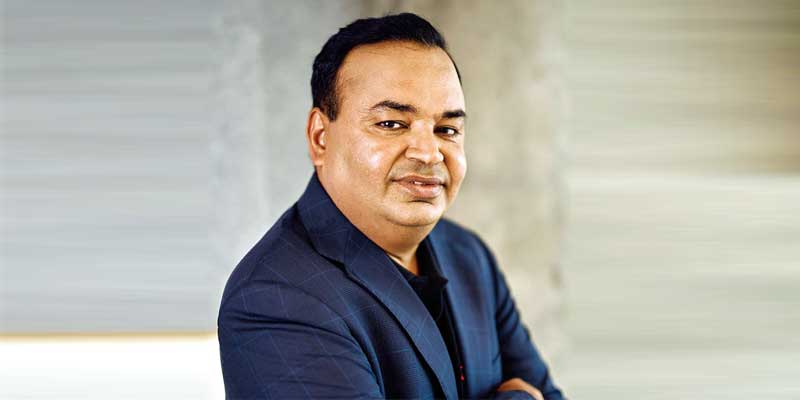
Haresh Calcuttawala, CEO and Co-Founder, Trezix, explains how their platform streamlines export processes, optimises logistics operations, and addresses the challenges faced by the cement industry.
How does your platform help in the compliance of cement exports?
The Trezix platform helps with the end-to-end processes for exporters, ensuring complete visibility of these processes focusing on shipments, documents, compliances, etc. The platform is also integrated with various stakeholders’ part of the export process including integration with Unified Logistics Integration Platform (ULIP) by the Government of India.
What is the impact of your systems on the cost and productivity of a cement plant?
The Trezix platform helps to optimise the turnaround time, visibility of shipment and improving efficiencies, which results in optimisation in logistics cost and improvement in working capital.
What are the major challenges in logistics and how can that be resolved?
A major challenge in the cement industry is the logistics cost and time for delivery. This can only be resolved with faster turnaround time, complete visibility of shipments, delivery lead time and process control to adhere to compliance.
Tell us your views on the change technology is bringing to logistics.
In the cement industry, so far technology has been more focused on internal process, and optimising demand and supply in the area of supply chain. However, now the focus has completely shifted to external stakeholders and their processes, and how have we integrated processes to further optimise the logistics execution.
Can your systems and solutions be customised based on customer requirements?
Every customer has some unique value proposition for their customer segment. Trezix has flexibility by way of configuration to adhere to industry needs and specific customer needs, keeping in mind the regulatory processes are not deviated to fulfil statutory requirements.
How do you foresee the face of logistics changing for the cement industry?
Digitalisation is one of the biggest waves you can see in the logistics space, which is changing the face of the industry. Digitalisation is changing the logistics landscape. Various concepts like Just In Time (JIT) to customer delivery are now a reality. Vehicle utilisation, fuel efficiency, delivery visibility, vehicle tracking through RFID, Fastag, FOIS (rail receipt tracking), container/cargo tracking across geography is now a reality.
- –Kanika Mathur

Ankit Kumar, Co-Founder and CEO, Skye Air, highlights the advantages of drone deliveries for the cement industry to improve the overall operational efficiency and cost-effectiveness of the supply chain.
What is the environmental impact that drone deliveries can create?
Drone deliveries have the potential to significantly reduce environmental impact compared to conventional delivery methods. By utilising drones, the carbon footprint of last-mile delivery can be slashed by eliminating the need for vehicles and vans, which emit greenhouse gases during transport. In fact, studies have shown that drone deliveries can reduce carbon emissions by up to 80 per cent compared to traditional delivery methods. Additionally, drones provide more direct routes, minimising congestion and further lowering emissions.
Furthermore, Skye Air’s implementation of drone technology can contribute to a substantial decrease in air pollution. Traditional delivery vehicles, powered by fossil fuels, contribute significantly to air pollution, whereas drones operate on cleaner energy sources, such as electricity. As a result, the adoption of drone technology by Skye Air could lead to a notable reduction in harmful pollutants released into the atmosphere.
It’s worth noting that Skye Air is committed to continuous monitoring and optimisation of its operations to ensure that the environmental benefits of drone delivery are maximised. Through data-driven analysis and innovative strategies, Skye Air aims to further enhance the efficiency and sustainability of its drone delivery services.
In conclusion, while drone deliveries offer significant environmental benefits, rigorous management and innovation are essential to mitigate any potential negative effects and ensure the long-term viability of drone delivery operations.
Tell us about the efficiency created by drone delivery systems.
Skye Air has spearheaded a paradigm shift in the logistics industry by substantially augmenting efficiency in their drone deliveries. Drones can help circumvent traditional road networks, bypass traffic congestion and surmount logistical impediments, facilitating expeditious and direct transportation of goods. This heightened efficiency is particularly conspicuous in exigent circumstances, such as the delivery of medical supplies to remote regions or the expeditious fulfillment of urgent orders. By harnessing the capabilities of drones, Skye Air optimises delivery routes, curtails fuel consumption, and mitigates the overall operational costs inherent in conventional delivery methodologies.
Indeed, empirical data underscores the efficacy of drone deliveries, showcasing a significant reduction in delivery times by up to 50 per cent compared to traditional methods. Moreover, drone deliveries have been shown to minimise fuel usage by approximately 60 per cent, contributing to substantial environmental conservation efforts.
Furthermore, the automation of the delivery process not only expedites operations but also bolsters efficiency, resulting in enhanced customer satisfaction rates. With streamlined processes and expedited turnaround times, Skye Air sets a new standard for excellence in the logistics domain.
What is the role of digitalisation and technology in your delivery and transport system?
In Skye Air, digitalisation and technology serve as pivotal catalysts in revolutionising our delivery and transport system. Through the integration of cutting-edge drone technology like Skye UTM, we have established a streamlined and efficient delivery process. Our drones are equipped with state-of-the-art navigation systems and sensors, enabling precise and secure delivery routes. Skye UTM stands as the most advanced and indigenised Aerial Traffic Management platform, designed to furnish situational awareness, autonomous navigation, risk assessment, and traffic management to all drone and aerial mobility operators across the airspace. Skye UTM has already facilitated successful BVLOS (Beyond Visual Line of Sight) drone flights. The Skye UTM captures over 255+ parameters of UAV movements, storing them in its ‘Black box’, which comprises a published systematic description of the entire flight. This platform offers the inaugural 3-Dimensional view of the drone airspace, alongside operations and regulations mapping servers, furnishing the latest airspace status, verified paths, and exhibiting real-time UAV movements. Furthermore, our digital platforms empower customers to seamlessly place orders and track their deliveries in real-time. This digitalisation not only amplifies the velocity and precision of our deliveries but also ensures transparency and accountability throughout the entire process.
Can drone deliveries be incorporated with the cement industry in the future?
In the foreseeable future, the incorporation of drone deliveries holds promise for integration within the cement industry, presenting efficient and swift transportation solutions for materials. The sophisticated drone technology prevalent in logistics stands poised to collaborate seamlessly with cement companies, optimising their supply chain operations. Drones can ferry small batches of cement or other construction materials to remote or challenging-to-access locations, thereby diminishing reliance on conventional transportation modes such as trucks and mitigating logistical complexities. Through the strategic utilisation of drones, the cement industry stands to bolster its efficiency, curtail costs and elevate overall operational efficacy.
- –Kanika Mathur

RAHSTA to showcase cutting-edge road construction tech, says NCC Director

RAHSTA will drive road construction innovation: Sundaresan

New appointment at TMEIC

Social Impact Award for Ambuja Cements

UCWL unveils new plant in Dabok, Udaipur

Environment Ministry revises rules of solid waste management

M-sand boards new terrain

Process and quality optimization in cement plant.
Concrete: A Highly Sustainable Building Material




